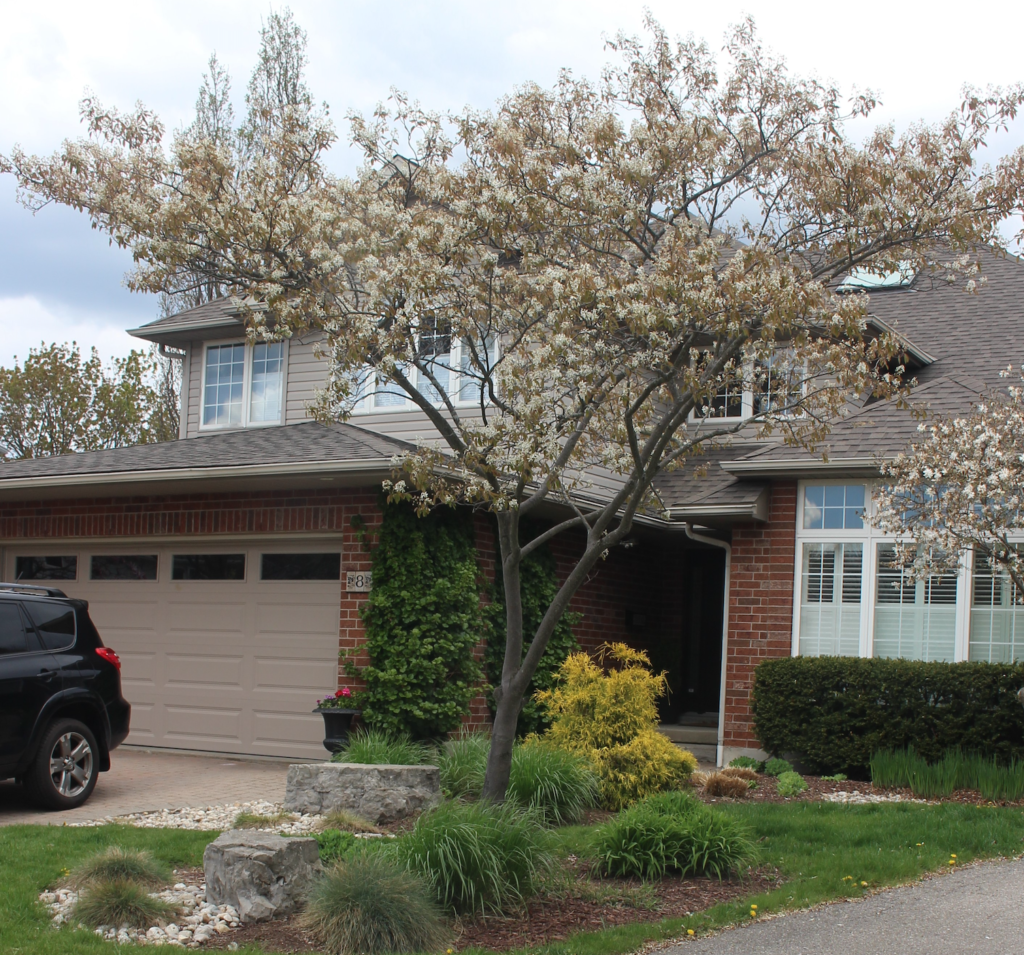
When planning landscaping in Wheaton, it helps to understand the purpose and strengths of each tree species. Two popular choices, the hackberry and serviceberry trees, are often selected for different reasons. One provides dependable shade and structure, while the other delivers seasonal color and compact growth. Understanding how they differ can help Wheaton homeowners make smarter planting decisions based on their property size, layout, and goals.
What to expect from a hackberry tree
Hackberry is a large, deciduous shade tree in the elm family. It grows fast, reaches 40 to 60 feet tall at maturity, and develops a broad, rounded canopy. Hackberry offers solid performance for homeowners seeking a low-maintenance tree with high shade value.
The hackberry tree Wheaton homeowners choose typically handles tough soil, urban stress, and drought without issue. It’s a good option for planting along streets, back property lines, or open areas where long-term canopy coverage is needed. The bark has a corky, warty texture, and the small berry-like fruit attracts birds in the fall.
Hackberries also tolerate wind and pollution, making them a good fit for public spaces and suburban yards. Their deep root systems help stabilize soil and reduce erosion. Although not a showy tree, their reliability and ease of care make them a practical solution for adding broad shade and habitat support.
Because of its height and spread, Hackberry works best in larger yards or community green spaces. It’s not ideal near small homes, patios, or driveways where its size can feel overpowering.
Why serviceberry suits smaller yards
Serviceberry is a smaller, ornamental tree that tops between 15 and 25 feet, depending on the variety. Its main appeal comes from multi-season interest: spring flowers, edible berries in summer, and striking red-orange fall color.
The serviceberry tree Wheaton residents frequently plant is Amelanchier x grandiflora, often sold under cultivars like Autumn Brilliance. This tree fits nicely into tight areas like front yards, near entrances, or integrated into garden beds. Unlike hackberry, which dominates a space, serviceberry adds detail and variation without overwhelming the design.
Its flowers attract early-season insects, while the berries provide food for birds. Serviceberry adapts to sun and part shade, making it flexible for various sites.
When to choose one over the other
Tree selection depends on your yard’s space, function, and light exposure. Use hackberry when you need:
- Broad shade coverage
- A durable tree for open space
- Long-term structure in a large area
- Minimal care after establishment
Choose serviceberry when you want:
- A smaller tree for limited planting zones
- Seasonal flowers, berries, and fall color
- Habitat support for birds and pollinators
- A tree suitable near windows or sidewalks
Can these trees be planted together?
They can, but only in the proper layout. Serviceberries can serve as understory or companion trees when planted on the sunny edge of hackberry’s reach. This creates a layered look and adds seasonal change beneath a long-standing shade canopy.
In larger yards, placing hackberry near the back property line and using serviceberry closer to the house creates depth and a tiered visual. Serviceberry provides early flowers and bird activity, followed by shade and structural coverage from hackberry as it matures.
Site and soil considerations
Both trees are adaptable but benefit from thoughtful planting. Hackberry handles clay soil and urban conditions well. It’s a reliable choice for areas with inconsistent watering or poor drainage. Serviceberry prefers well-drained soil and will perform better with some mulch and light pruning to shape it during early growth.
With both species, watering during the first growing season is essential. After that, maintenance is low unless the tree shows signs of stress or pest pressure.
How these trees support local biodiversity
The hackberry and serviceberry trees Wheaton provide value beyond their visual or structural roles. Hackberry trees support a range of native insects, which attract birds like woodpeckers and chickadees. Their small fruits offer food in fall, and their broad canopy provides shelter for backyard wildlife.
The early blossoms of serviceberries support native bees, while the summer berries feed birds like cedar waxwings and catbirds. In smaller yards with limited planting space, including a serviceberry tree, substantial habitat value is added in a compact form.
Final thoughts
Not all trees serve the same role in a yard. The hackberry tree Wheaton landscapes use offers reliable shade and scale, while the serviceberry delivers color, wildlife value, and compact beauty. By understanding the purpose and placement of each, Wheaton residents can select the right tree for the right location, maximizing curb appeal, function, and long-term growth and planting with intention results in healthier trees and a better-looking yard every season.




